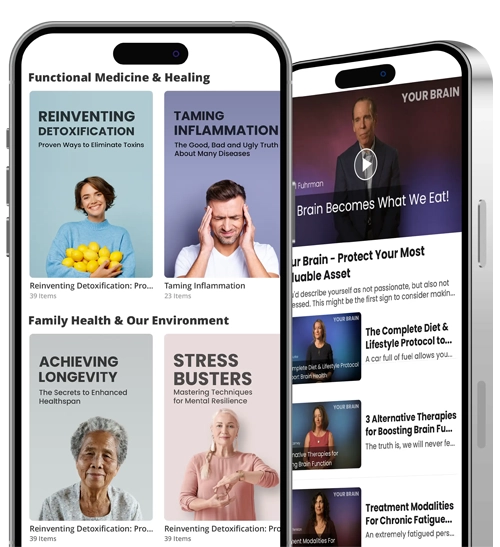5 Steps to Protect Your Hearing
Home
 Blog
Blog
 Health
Health
 Organs & Systems
Organs & Systems
 Nervous System
Nervous System
 5 Steps to Protect Your Hearing
5 Steps to Protect Your Hearing

Your ears are precision hearing instruments, but they are put at risk on a surprisingly regular basis.
It’s estimated that more than 30 million workers [1] get exposed to noise considered “hazardous”, anything above 85 dB(A). While many industries require people to wear hearing protection against such loud noise, there are industries (such as agriculture or construction) where no hearing protection is required, and people are at serious risk for hearing loss.
At the end of the day, it’s up to you to protect your hearing!
There are a number of simple yet highly effective things you can do to shield your ears from loud noise—and, in so doing, reduce the risk of noise-induced hearing loss over the years. We’ve compiled a list below of actionable steps you can take to protect your hearing starting today.
How to Protect Your Hearing in 5 Simple Steps
Step 1: Go with what works for YOU. One research paper[1] stated, “The most effective hearing protection devices are those with which the worker is most comfortable.” Think about it: if your hearing protection makes you uncomfortable, you’ll be far less likely to use them, or you’ll use them less than you should. But if the hearing protection is comfortable, fits your ears, and doesn’t interfere with your work, you’ll have no problem using them.
From among the options listed below (in Steps #4 and #5), choose the hearing protection that best suits you. The easier they are to wear and the more they suit your preferences, lifestyle, and activities, the better they will be at protecting your hearing.
Step 2: Turn down your music. Music from personal listening devices (such as your smartphone or car stereo) makes up a significant amount of your daily “noise dose” [2]. If you listen to your music at very high volume—which, let’s be honest, a lot of us do—you run the risk of increasing noise-induced hearing damage. As one study [3] found, “significantly worse hearing thresholds were found in PLD users using audiometry, and significantly poor results in otoacoustic emission (OAE), even in the participants with self-reported ‘normal hearing’.”
The key is just to turn down the volume to “healthy levels”, anything below 70 dB(A) [4]. This is especially important if you’re listening to a lot of music directly via headphones or earbuds, where the noise is piped directly into your ear canals. Not only will this reduce your daily noise dose, but it can attenuate noise-induced hearing loss.
Step 3: Reduce environmental noise. You’d be amazed by how much environmental noise you’re exposed to every day, and how loud it can be. The NHS lists some of the more common noise sources [5], including:
Get FREE Access!
We are on a mission to change your life by providing you with curated science-backed health tips, nutrition advice and mouth-watering recipes. Sign up to receive your 3 starter gifts and get exclusive access to new weekly content for FREE:

Free eBook
to boost metabolism

4 Shopping Guides
for every diet

22 Free Recipes
to beat sugar addiction
 Subscribe now
Subscribe now
- conversation – 60dB
- busy traffic – 70 to 85dB
- motorbike – 90dB
- plane taking off – 120dB
- ambulance siren — 120dB
As you can see, the noise around you can rise to dangerous levels and cause damage to your ears, as well as exceed your “daily noise dose”.
Obviously you can’t totally avoid environmental noise, because you have to work, play, and live in busy places where you’re exposed to all sorts of sounds from all directions. But you can find ways to reduce it.
For example, if you know there is noisy construction on one street, try taking a different route to get to work, one that doesn’t lead you past a construction site. When you’re walking to work, try taking smaller back streets that don’t have such heavy traffic. Use hearing protection (see the next two steps) whenever possible.
Step 4: Use passive hearing protection devices. Passive hearing protection devices include ear muffs, ear plugs, and canal caps. Simply put, they are designed to mechanically reduce noise by blocking it out of your ear canals. These can be inexpensive and highly effective solutions to prevent noise-induced hearing loss, particularly if you live or work in very noisy environments.
Step 5: Use active noise reduction devices. Active noise reduction devices are devices that uses digital or electrical components to suppress or counteract noise. For example, noise-canceling headphones utilize specially-calibrated digital chips to generate a sound or electrical signal that neutralizes loud noises (gunshots, airplane turbines, car engines, etc.). These are more effective than passive hearing protection devices because they incorporate the active noise reduction into the passive protection (such as over-the-ear headphones or ear muffs). They are pricier, but among your best options for protecting your ears from damage.
It’s absolutely imperative that you take steps to reduce environmental noise, particularly the loud sounds that could damage your ears. Your ears are highly attuned and sensitive instruments capable of picking up even faint sounds, but repeated exposure to excessive noise can damage your ears and reduce your hearing. Use the information above to help you identify any potentially dangerous noise levels in your environment, and take the appropriate measures to protect your ears. Do this, and you’ll enjoy many happy years of excellent hearing!
Resources:
[1] https://pubmed.ncbi.nlm.nih.gov/9341314/
[3] https://pubmed.ncbi.nlm.nih.gov/26768911/
[4] https://www.noisyplanet.nidcd.nih.gov/parents/too-loud-too-long
[5] https://www.nhs.uk/live-well/healthy-body/-5-ways-to-prevent-hearing-loss-/

We created ZONIA because we believe that everyone deserves to be empowered with the education and tools to be healthy and happy. Zonia's original videos and personalized transformation programs by our health & wellness experts will help you achieve this mission. Click on the button below to get started today:





